Is your car or diesel pickup suffering from bad fuel injector symptoms? Does your engine not start, sputter, lacks power, cannot rev high, and blows black smoke? If so, you might have a leaking, clogged or broken fuel injector. Read on to learn the most common symptoms and two methods to test these parts!
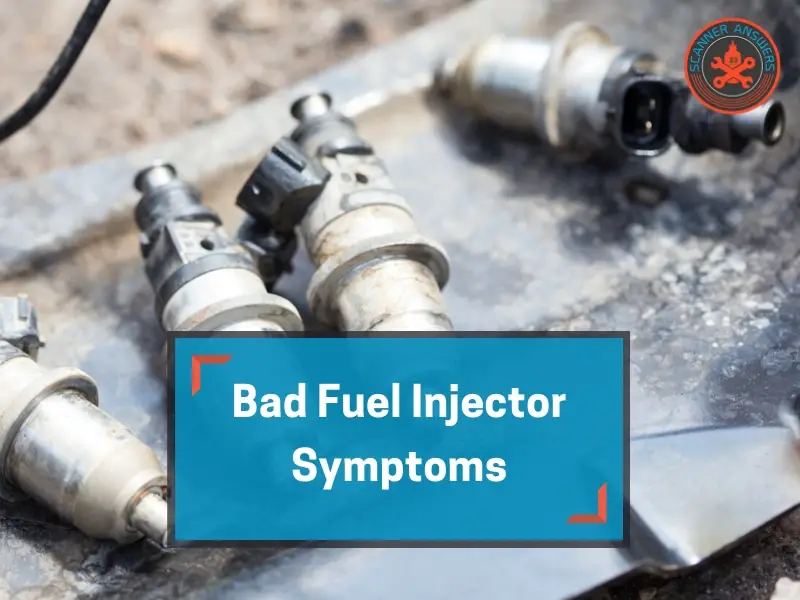
Introduction to engines and fuel
The fuel injectors are responsible for supplying the fuel inside the combustion chamber. When a fuel injector goes badly, it creates a lot of symptoms that are amazingly similar to other engine problems. This is the reason why it takes the proper equipment, skill set, and knowledge to correctly diagnose a fuel injector malfunction. (read more about how fuel injectors work)
Truth be told, there are a variety of ways on how to check for a bad fuel injector. My firsthand experience in dealing with this issue is not a pleasant one. I eventually ended up buying parts that I don’t need, and I learned a valuable lesson there. This article is meant to give you some insight on how to check for a fuel injector malfunction so you can save time and money in fixing your vehicle.
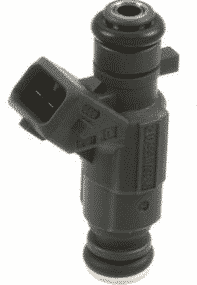
What are the symptoms of a bad, clogged, or leaking fuel injector?
- Starting issues or no start condition.
My car didn’t have starting issues despite the injector problem. But as time progressed and the check engine light came on, my car eventually refused to start. Permanently. - Faulty idling.
If your car is running fine, it should idle smoothly. Don’t let anyone tell you otherwise. This is the first symptom I felt before ruling out a bad fuel injector. The engine will also vibrate excessively, which you can feel inside the car. - The inability of the motor to rev to higher engine speeds.
I also noticed this firsthand. With the engine idling and the transmission in Park or Neutral, step on the gas pedal and push it all the way to the floor. If the motor cuts off at 4,500 or 5,000 rpm (or refuses to rev all the way to redline), you are most likely dealing with a malfunctioning fuel injector. - Engine tendency to surge, hesitate, or buckle under heavy loads.
Before the check engine light came on, I noticed the car was having trouble on inclined roads or multilevel car parks. The engine feels like it has no power. - Knocking or pinging sound when accelerating.
It sounds like crashing bottles when you step on the gas and is caused by an excessively lean condition. At this point, the motor is basically starving for fuel. Continued operation will cause serious engine damage - Inaccurate shifts from the transmission.
Anything that has something to do with fuel delivery problems, electrical issues, or combustion faults will affect the behavior of the automatic transmission. In some cases, the problem is so bad that you end up blaming the transmission for your troubles. - Check engine light.
In my case, the car was already running badly before the check engine light came ON.
As you can see, the symptoms are aplenty, although it all depends on the make and model of your vehicle and the severity of the issue. In my experience, the symptoms came first before the check engine light.
Some or all of the symptoms listed above can also be caused by other problems like bad or fouled spark plugs, a clogged fuel filter, bad fuel pump, or engine vacuum leaks.
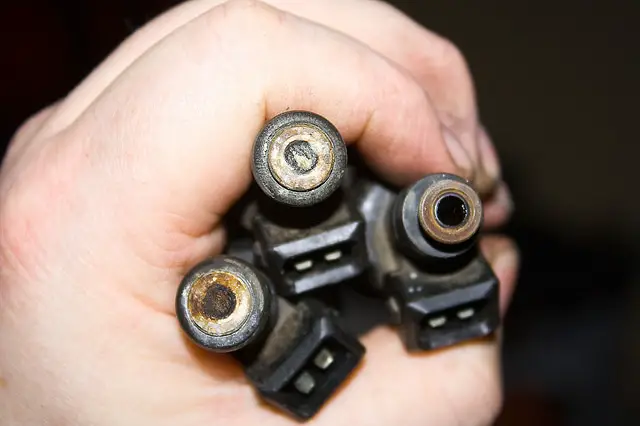
Bad injector symptoms on diesel vehicles
If you’ve got a clogged, broken, or leaking fuel injector in your beloved Dodge Cummins 5.9L or Ford Powerstroke or even Duramax Diesel, you’ll have similar problems as a gasoline engine. However, here’s 4 of the most common engine trouble we’ve noticed in diesel engines
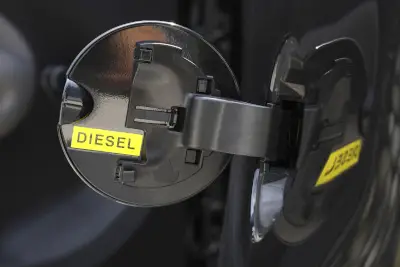
1. Black Smoke
Some might argue that “rolling coal” is the reason to own a diesel, however, if your truck is blowing black smoke it’s a sign that the fuel-to-air ratio is off and likely an injector issue. Leaking fuel injectors in diesels often product a thick black smoke.
2. Hard Start
A diesel engine requires more fuel to start than a gasser so if your injectors are not performing correctly, your truck is going to have starting issues.
3. Low MPG
I’ve seen this one usually combined with the black smoke. Because your ECU/ECM cannot control the fuel-to-air ratio properly due to the clogged fuel injector your engine will be burning much more fuel than needed.
4. No Power
Your Cummins motor comes from the factory fine-tuned by master engineers who devoted their life to making sure your truck is cranking out 1,000 Torque… so when parts start going out and you notice no power, this is a sure sign that there’s an issue. Failing Injectors in diesels are a major culprit to loss of power.
Related: Does fuel injector cleaner work?
How to diagnose a bad fuel injector (2 Methods)
There are many ways to do it. My mechanic is an eccentric fellow, but he was able to figure out the problem using unconventional methods. I’ll discuss the steps on how to test a fuel injector along with alternative ways to do it.
Method 1 – Testing without removing them from engine
You can check the condition of the fuel injectors without removing them from the engine.
Step 1. Get a long screwdriver
All you need is a long metal rod or screwdriver. Make sure the metal rod or screwdriver is at least 12-inches long. You’ll use this as a stethoscope.
However, if you happen to have an engine stethoscope lying around in the garage, you can use that as well.
Step 2: Start the engine and let it idle.
If the engine refuses to start, skip to the next method below.
Step 3: Lift the hood and secure using the hood latch.
Find the location of each injector and prepare to listen. For clarity’s sake, the fuel injectors are usually located on the side of the engine near the head or intake manifold. If you have a four-cylinder horizontally-opposed engine, the injectors are on the side of the engine facing the firewall. If you have a V6 or V8, the fuel injectors are on the outside of the V-configuration.
Step 4: Place the rod on the injector
Grab the metal rod or screwdriver and place one end near each injector. Next, move your ear towards the other end of the metal rod and listen for a constant clicking sound. Be careful when doing this. You don’t want your hair or piece of clothing getting snagged on all those rotating belts in the motor.
What you’re looking for is an intense and continuous clicking sound. Move the metal rod to each injector until you find the faulty part. You’ll know you struck gold if the injector is silent or is producing an intermittent clicking sound.
Step 5: Remove, Replace, or Clean the Leaking or Clogged injector
After you singled out the injector that is not making any noise or randomly makes a slight click noise, you’ll want to clean or replace the injector.
Should I replace all fuel injectors at once?
This is a hotly debated issue and comes down to your financial situation. The thinking goes that if one injector is bad, the others are likely to follow. And since you already have the fuel rail off and the Labor invested, might as well swap them all out. But fuel injectors can be expensive (Diesel sets run over $1,000!) to replace all at once.
Method 2 – Testing when the engine won’t start
Naturally, you won’t be able to listen to the fuel injectors if the engine refuses to start. This next method is not for beginners. Make sure you know what you’re doing since you’ll be removing the fuel rail.
- Loosen and remove the bolts that secure the fuel rail to the head or intake manifold.
- Lift the fuel rail gently
Take care not to bump or ‘shock’ the injectors. Depending on the make and model of your vehicle, a single rail can hold three to six fuel injectors. The idea here is to remove the injectors from the engine as a whole so you can see the fuel spray as you start the engine.
As I said, my mechanic was unconventional in his methods. But he was able to check the condition of all the fuel injectors by doing this. After removing the fuel rail, he placed a thick shop towel over the holes left by the injector. This allowed him to see the amount of fuel being sprayed by each injector without spraying fuel all over the engine.
Be careful when doing this. - Crank the Engine 3-5 seconds
Let a friend or assistant turn the key to crank the engine for 3 to 5 seconds each time. The injectors should spray fuel as the engine turns. If one or more of the injectors are not spraying fuel, you have found the culprit/s. Do not over crank the motor. You might damage the starter or drain the battery.
What else should I check?
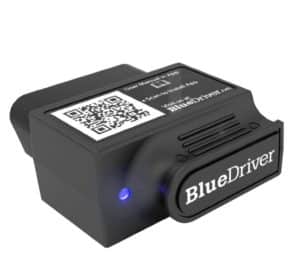
I’m glad you asked. Recently I encountered bad fuel injector symptoms on my Ford Ranger and below is a brief story of what my mechanic found when fixing it!
An OBD2 Scan Tool with save you time!
If there’s an illuminated check engine light (CEL), make sure to scan the ECU to get the OBD2 Diagnostic trouble codes (DTCs). In my case, my car had the P0261 code (Cylinder 1 Injector Circuit Low). It’s also common to find a p0300 – p0308, or p0200, p0203, p0201 codes showing.
Three OBD2 scanners we suggest are:
Check the wiring
True to form, the fuel injector in cylinder #1 was not spraying fuel when we removed the fuel rail. But since my car was still relatively new (although it already racked up a lot of miles), my mechanic decided to check the wiring harness in injector #1. He refused to believe that my injector is faulty at 70,000 miles! He told me it’s relatively common for fuel injectors to keep working past 200,000 miles, or maybe more.
Lo and behold! The mechanic found a frayed ground wire! He had to peel off the casing on the wiring harness to find it, but he was certain the broken ground wire was causing my engine problems.
Swap the injector rail locations
But in order to double check, he decided to do something that is more unconventional. He removed fuel injector #1 from the fuel rail and swapped it with injector #2. Now, injector #2 is sitting on the rail of injector #1. Remember he did all this while the fuel rail and the injectors were still removed from the motor.
I cranked the motor and he confirmed that fuel injector #2 is not spraying fuel. This painted a clearer picture of what was going on.
The issue is not caused by a bad injector. It was a basic wiring issue!
Imagine if he didn’t find this earlier and I ended up buying a new set of fuel injectors! The funny thing is you don’t replace just one injector. If you replace one, you need to replace them all!
My issue was a simple wiring problem!
Long story short, he fused the broken ground wire and tested again. Once fuel injector #1 is spraying fuel, he bolted the rail back to the engine and started the motor. He cleared the trouble code, wrapped the wiring harness with insulating electrical tape, and we went for a test drive.
The moral of the story is simple: diagnosing bad fuel injector symptoms requires sufficient engine knowledge. It’s easy to check for malfunctions but what’s difficult is to verify the real cause of the problem. In my case, the injector was fine. The wiring was the main issue.
